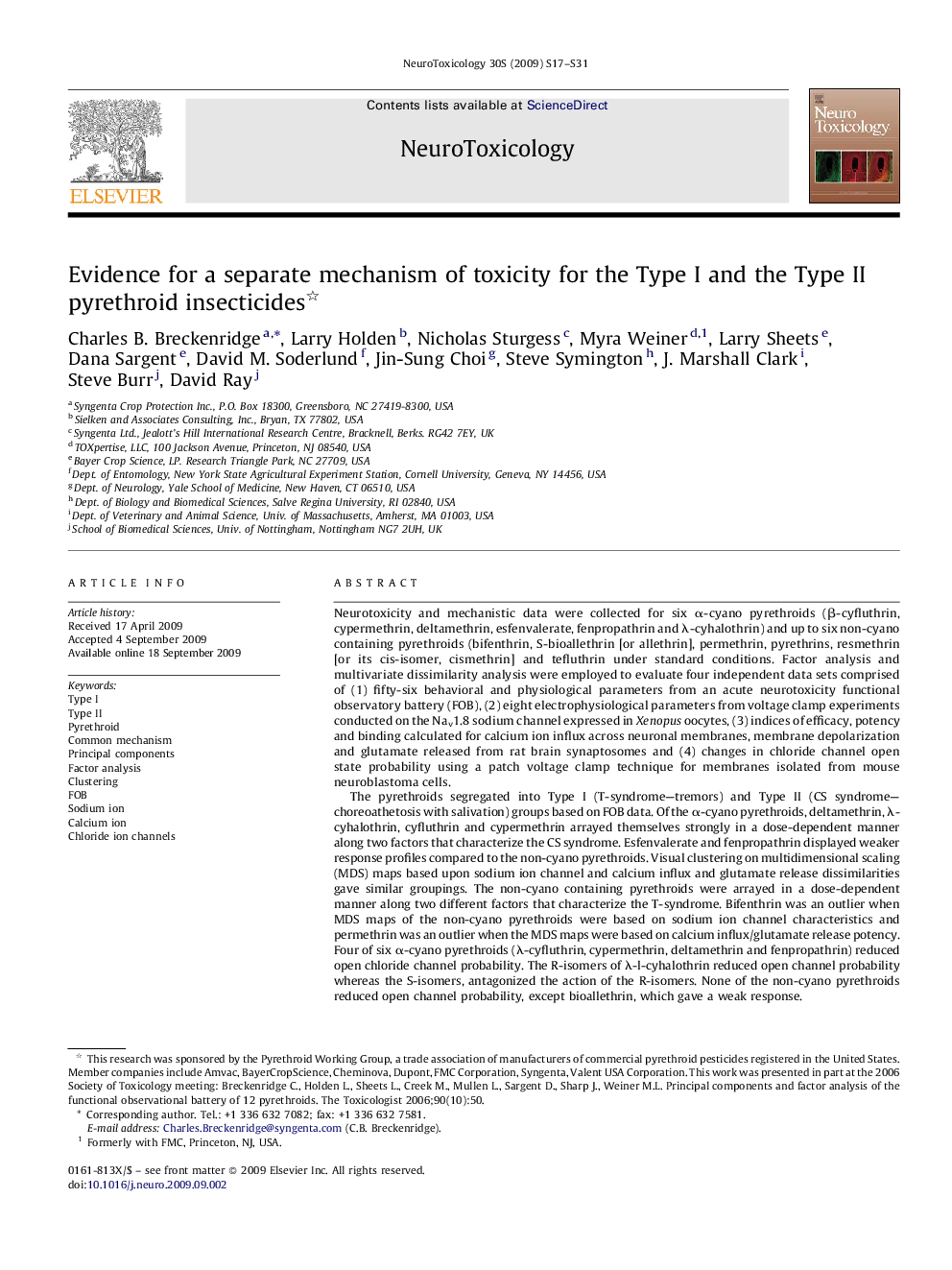| کد مقاله | کد نشریه | سال انتشار | مقاله انگلیسی | نسخه تمام متن |
|---|---|---|---|---|
| 2590133 | 1131725 | 2009 | 15 صفحه PDF | دانلود رایگان |

Neurotoxicity and mechanistic data were collected for six α-cyano pyrethroids (β-cyfluthrin, cypermethrin, deltamethrin, esfenvalerate, fenpropathrin and λ-cyhalothrin) and up to six non-cyano containing pyrethroids (bifenthrin, S-bioallethrin [or allethrin], permethrin, pyrethrins, resmethrin [or its cis-isomer, cismethrin] and tefluthrin under standard conditions. Factor analysis and multivariate dissimilarity analysis were employed to evaluate four independent data sets comprised of (1) fifty-six behavioral and physiological parameters from an acute neurotoxicity functional observatory battery (FOB), (2) eight electrophysiological parameters from voltage clamp experiments conducted on the Nav1.8 sodium channel expressed in Xenopus oocytes, (3) indices of efficacy, potency and binding calculated for calcium ion influx across neuronal membranes, membrane depolarization and glutamate released from rat brain synaptosomes and (4) changes in chloride channel open state probability using a patch voltage clamp technique for membranes isolated from mouse neuroblastoma cells.The pyrethroids segregated into Type I (T-syndrome—tremors) and Type II (CS syndrome—choreoathetosis with salivation) groups based on FOB data. Of the α-cyano pyrethroids, deltamethrin, λ-cyhalothrin, cyfluthrin and cypermethrin arrayed themselves strongly in a dose-dependent manner along two factors that characterize the CS syndrome. Esfenvalerate and fenpropathrin displayed weaker response profiles compared to the non-cyano pyrethroids. Visual clustering on multidimensional scaling (MDS) maps based upon sodium ion channel and calcium influx and glutamate release dissimilarities gave similar groupings. The non-cyano containing pyrethroids were arrayed in a dose-dependent manner along two different factors that characterize the T-syndrome. Bifenthrin was an outlier when MDS maps of the non-cyano pyrethroids were based on sodium ion channel characteristics and permethrin was an outlier when the MDS maps were based on calcium influx/glutamate release potency. Four of six α-cyano pyrethroids (λ-cyfluthrin, cypermethrin, deltamethrin and fenpropathrin) reduced open chloride channel probability. The R-isomers of λ-l-cyhalothrin reduced open channel probability whereas the S-isomers, antagonized the action of the R-isomers. None of the non-cyano pyrethroids reduced open channel probability, except bioallethrin, which gave a weak response.Overall, based upon neurotoxicity data and the effect of pyrethroids on sodium, calcium and chloride ion channels, it is proposed that bioallethrin, cismethrin, tefluthrin, bifenthrin and permethrin belong to one common mechanism group and deltamethrin, λ-cyhalothrin, cyfluthrin and cypermethrin belong to a second. Fenpropathrin and esfenvalerate occupy an intermediate position between these two groups.
Journal: NeuroToxicology - Volume 30, Supplement, November 2009, Pages S17–S31